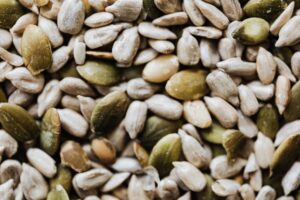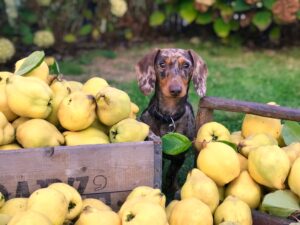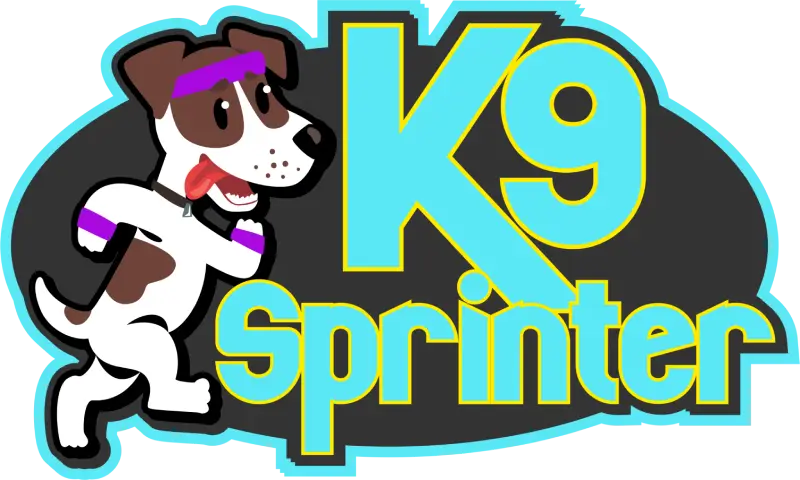A balanced diet is essential for your dog’s overall health and well-being. With countless dog food options available, it can be overwhelming to find the perfect match for your furry friend. This ultimate guide to canine nutrition will explore the essentials of feeding your dog and how the nutritional requirements change as dogs age. We will also discuss the different life stages of dogs and how to meet their specific needs.
The Importance of Proper Nutrition for Dogs
Proper nutrition is crucial for maintaining your dog’s health, wellness, and longevity. A well-balanced diet helps support a strong immune system, healthy skin and coat, and optimal digestion. Additionally, it plays a vital role in preventing common health issues such as obesity and allergies.
Different Life Stages of Dogs
Dogs have unique nutritional requirements depending on their life stage. Here are the primary life stages of dogs and how their nutritional needs change:
- Puppy: Puppies grow rapidly and require more calories, protein, and essential nutrients than adult dogs. High-quality puppy food provides the necessary nutrients to support their growth and development.
- Adult: Adult dogs require a balanced diet with the right proportions of protein, fat, and carbohydrates to maintain their health and energy levels. Feeding them age-appropriate dog food helps prevent weight gain and other health issues.
- Senior: As dogs age, their metabolism slows down, and they become less active. Senior dogs need fewer calories and a diet rich in essential nutrients to maintain their health and prevent age-related issues such as joint problems and cognitive decline.
Meeting the Nutritional Needs of Dogs at Different Life Stages

Puppy Nutrition
During this critical growth period, puppies need more calories and nutrients than adult dogs. Look for puppy food containing high-quality protein sources to support muscle development and healthy fats for energy. Also, ensure the food provides essential vitamins and minerals like calcium and phosphorus for bone growth.
Always follow the feeding guidelines on the dog food label and adjust portions based on your puppy’s age, size, and activity level. Puppies should be fed multiple small meals throughout the day to support their rapid growth and high energy demands.
Adult Dog Nutrition
When your dog reaches adulthood, it’s essential to transition them to an adult dog food formula. Adult dog food should contain a balanced mix of protein, fats, and carbohydrates to support overall health and maintain a healthy weight.
Pay attention to your dog’s activity level and adjust their calorie intake accordingly. Active and hardworking dogs may require more calories, while less active dogs need fewer calories to prevent obesity.
Senior Dog Nutrition
As dogs age, their nutritional requirements change. Senior dogs often need fewer calories due to a slower metabolism and decreased activity levels. However, they still require high-quality protein sources to maintain muscle mass and essential nutrients to support overall health.
Choose a senior dog food formula specifically designed to meet their unique needs. Look for ingredients that support joint health and cognitive function, such as omega-3 fatty acids and antioxidants.
Understanding Dog Food Labels
When selecting a dog food, it’s crucial to understand how to read the label. Look for the following information:
- Ingredients: Ingredients are listed in descending order by weight. Look for high-quality protein sources, such as whole meats or meat meals, as the first ingredient. Avoid foods with excessive fillers, artificial preservatives, or unidentified meat sources.
- Guaranteed Analysis: This section provides information about the minimum or maximum levels of nutrients in the food, such as protein, fat, fiber, and moisture content. Use this information to compare different dog foods and ensure they meet your dog’s nutritional requirements.
- Feeding Guidelines: These recommendations will help you determine the appropriate serving size for your dog based on their weight and life stage. Keep in mind that these guidelines are only a starting point, and you may need to adjust portions based on your dog’s individual needs and activity level.
Special Considerations and Dietary Restrictions
Some dogs may require specialized diets due to allergies, food sensitivities, or specific health conditions. Consult with your veterinarian if you suspect your dog has a dietary issue, as they can help you determine the best course of action and recommend appropriate dog food options.
Common dietary restrictions for dogs include grain-free, limited ingredient, raw, kibble,, and prescription diets. When selecting a specialized dog food, carefully read the label to ensure it meets your dog’s specific needs and still provides a balanced diet.
Raw Diets
Raw diets, also known as the BARF (Biologically Appropriate Raw Food) or raw feeding, have gained popularity among some dog owners. These diets typically consist of raw meat, bones, organs, vegetables, and fruits, aiming to mimic the natural diet of a dog’s wild ancestors.
Pros of Raw Diets
- Natural Diet: Advocates of raw diets argue that it closely resembles the diet dogs have evolved to eat, leading to better health and vitality.
- Improved Digestion: Raw diets may be easier for dogs to digest due to the higher moisture content and natural enzymes present in raw foods.
- Better Oral Health: Chewing raw bones can help clean a dog’s teeth and reduce tartar buildup.
- Higher Quality Protein: Raw diets often contain higher-quality protein sources than some commercial dog foods, which can be beneficial for muscle development and maintenance.
Cons of Raw Diets
- Safety Concerns: Feeding raw meat can pose a risk of bacterial contamination, such as Salmonella or E. Coli, which can be harmful to both dogs and humans.
- Imbalanced Nutrition: Preparing a balanced raw diet can be challenging, leading to nutritional deficiencies or imbalances if not done correctly.
- Expense: Raw diets can be more expensive than traditional dog food options, especially if using high-quality, human-grade ingredients.
- Time-Consuming: Preparing a raw diet requires significant time and effort, as it involves sourcing, preparing, and storing various raw ingredients.
Consult with your veterinarian before switching to a raw diet, as it may not be suitable for all dogs or households.
Grain-Free Diets

Grain-free diets have become increasingly popular in recent years, with some dog owners believing that grains are not a natural part of a dog’s diet and can cause allergies or digestive issues.
Pros of Grain-Free Diets
- Potential Allergy Relief: For dogs with grain sensitivities or allergies, a grain-free diet may help alleviate symptoms such as itching, skin irritation, or gastrointestinal distress.
- Higher Protein Content: Grain-free dog foods often contain a higher percentage of protein, which can be beneficial for active or working dogs.
- Lower Carbohydrate Content: Some grain-free diets have a lower carbohydrate content, which may be helpful for weight management or dogs with specific health conditions.
Cons of Grain-Free Diets
- Expense: Grain-free diets are typically more expensive than traditional dog foods containing grains
- Nutritional Imbalance: Some grain-free dog foods may not be nutritionally balanced, leading to deficiencies or excesses in certain nutrients.
- Unnecessary for Most Dogs: Most dogs do not have grain allergies or sensitivities and can safely consume grains as part of a balanced diet.
It is essential to consult with your veterinarian before transitioning your dog to a grain-free diet, as they can help you determine if it is necessary and recommend a balanced grain-free dog food.
Kibble Diets

Kibble, or dry dog food, is the most common type of dog food on the market. It is made by combining various ingredients, such as meats, grains, vegetables, and vitamins, and then cooking them through a process called extrusion.
Pros of Kibble Diets
- Convenience: Kibble is easy to store, measure, and feed, making it a convenient option for most dog owners.
- Cost-Effective: Kibble is generally more affordable than raw or grain-free diets, making it an economical choice for feeding your dog.
- Balanced Nutrition: Many kibble diets are formulated to meet a dog’s specific nutritional requirements, ensuring they receive the necessary nutrients for optimal health.
- Dental Health: The mechanical action of chewing kibble can help reduce plaque and tartar buildup, promoting better oral health.
Cons of Kibble Diets
- Lower Quality Ingredients: Some kibble brands may use lower-quality ingredients, such as meat by-products or excessive fillers, which can negatively impact your dog’s overall health.
- Highly Processed: The extrusion process used to create kibble can result in the loss of some nutrients, requiring the addition of synthetic vitamins and minerals to maintain a balanced diet.
- Potential Allergens: Kibble diets may contain common allergens, such as grains or certain proteins, which can cause issues for dogs with sensitivities or allergies.
When choosing a kibble diet, look for high-quality ingredients and a balanced nutritional profile. Consult with your veterinarian for recommendations based on your dog’s specific needs.
The Role of Supplements in Canine Nutrition
While a high-quality, balanced dog food should provide all the essential nutrients your dog needs, some dogs may benefit from additional supplements. Common supplements for dogs include joint support (glucosamine and chondroitin), omega-3 fatty acids for skin and coat health, and probiotics for digestive health.
Before adding any supplements to your dog’s diet, consult with your veterinarian to ensure they are necessary and won’t interfere with your dog’s current diet or medications.
Calories
Calories are a measure of the energy provided by food. A dog’s caloric needs depend on several factors, including their age, size, activity level, and metabolism. To maintain a healthy weight, it is essential to provide your dog with the appropriate number of calories each day.
Calculating Caloric Needs
To estimate your dog’s daily caloric needs, you can use the following formula:
- For adult dogs: (30 x body weight in kg) + 70 = daily caloric needs
- For puppies: (50 x body weight in kg) + 70 = daily caloric needs
Keep in mind that these formulas are just a starting point, and individual needs may vary. Monitor your dog’s weight and adjust their daily calorie intake accordingly.
Caloric Distribution
A balanced diet should provide the necessary calories from a combination of proteins, fats, and carbohydrates. The ideal caloric distribution for dogs is:
- Protein: 18-25% of total calories
- Fat: 10-15% of total calories
- Carbohydrates: 55-70% of total calories
These percentages can vary depending on your dog’s specific needs, such as age, breed, and activity level. Consult with your veterinarian to determine the best caloric distribution for your dog.
Carbohydrates
Carbohydrates are a source of energy for dogs, providing glucose for their cells. They are found in ingredients such as grains, vegetables, and fruits.
Choosing the Right Carbohydrates
When selecting a dog food, look for high-quality carbohydrate sources, such as whole grains and nutrient-dense vegetables. Avoid dog foods that rely heavily on simple sugars or excessive fillers, as these can contribute to weight gain and provide minimal nutritional value.
Benefits of Carbohydrates
- Energy Source: Carbohydrates are an essential energy source for dogs, particularly for high-energy breeds and working dogs.
- Digestive Health: Some carbohydrates, such as fiber, can help support a healthy digestive system by promoting regular bowel movements and maintaining a healthy gut microbiome.
- Weight Management: Complex carbohydrates can help keep your dog feeling full, which can be beneficial for weight management and preventing obesity.
Fats
Fats are a concentrated source of energy for dogs and are essential for several physiological functions, such as cell structure and hormone production. They also play a critical role in the absorption of fat-soluble vitamins.
Choosing the Right Fats
When selecting a dog food, look for high-quality fat sources, such as animal fats and fish oils. These sources provide essential fatty acids that support your dog’s overall health. Avoid dog foods that contain excessive amounts of unhealthy fats, such as trans fats, which can contribute to health issues.
Benefits of Fats
- Energy Source: Fats provide a concentrated source of energy for dogs, particularly for high-energy breeds and working dogs.
- Skin and Coat Health: Essential fatty acids, such as omega-3 and omega-6, help maintain healthy skin and a shiny coat.
- Brain Development: Fats, particularly DHA (docosahexaenoic acid), play a crucial role in brain development and cognitive function, especially in puppies.
Proteins
Proteins are essential for dogs, as they provide the necessary amino acids for growth, maintenance, and repair of tissues. Proteins also play a role in the production of hormones, enzymes, and antibodies.
Choosing the Right Proteins
When selecting a dog food, look for high-quality protein sources, such as whole meats and meat meals. These sources provide complete amino acid profiles necessary for your dog’s health. Avoid dog foods that rely heavily on low-quality protein sources or excessive plant-based proteins, as these may not provide the essential amino acids your dog requires.
Benefits of Proteins
- Muscle Development and Maintenance: Proteins provide the building blocks for muscle growth and maintenance, particularly important for growing puppies and active dogs.
- Immune System Support: Proteins are necessary for the production of antibodies, which help support a healthy immune system.
- Hormone Production: Proteins play a role in the production of various hormones that regulate essential bodily functions.
Best Foods, Vegetables, and Fruits for Dogs
Providing your dog with a variety of nutritious foods can help support their overall health. Many vegetables and fruits are safe and beneficial for dogs to eat, offering essential vitamins, minerals, and antioxidants. Here are some of the best foods, vegetables, and fruits for dogs:

- Lean meats: Chicken, turkey, and lean cuts of beef or pork are excellent sources of high-quality protein and essential amino acids.
- Leafy greens: Spinach, kale, and Swiss chard provide essential vitamins and minerals, including vitamins A, C, and K, as well as calcium and iron.
- Root vegetables: Carrots, sweet potatoes, and pumpkin are rich in beta-carotene, which supports healthy skin, coat, and eyesight.
- Berries: Blueberries, strawberries, and raspberries are packed with antioxidants and provide a natural source of sweetness that dogs enjoy.
- Apples: Apples are a great source of vitamins A and C, as well as fiber, which supports digestive health.
In addition to these healthy ingredients, plain Greek yogurt and peanut butter (without xylitol) can also be beneficial for dogs. Greek yogurt is a good source of calcium and probiotics, while peanut butter provides protein and healthy fats.
Recipes for Dogs
Chicken and Veggie Stir-Fry
-
- 1 cup cooked, diced chicken
- 1/2 cup cooked carrots, chopped
- 1/2 cup cooked spinach, chopped
- 1/2 cup cooked brown rice
Mix all ingredients together and serve at room temperature.
Pumpkin and Greek Yogurt Treat
-
- 1 cup pureed pumpkin (not pumpkin pie filling)
- 1/2 cup plain Greek yogurt
Mix pumpkin and Greek yogurt together. Pour into an ice cube tray and freeze for a cool and healthy treat.
Sweet Potato and Apple Mash
-
- 1 cup cooked and mashed sweet potatoes
- 1/2 cup cooked and mashed apples
Combine sweet potatoes and apples together. Serve at room temperature or slightly warmed.
Peanut Butter and Berry Dog Treats
-
- 2 cups whole wheat flour
- 1/2 cup peanut butter (without xylitol)
- 1 cup fresh berries (blueberries, strawberries, or raspberries)
- 1/2 cup water
Preheat oven to 350°F (180°C). Mix all ingredients together in a bowl, adding more water if necessary to create a dough. Roll out the dough and cut into shapes using a cookie cutter. Place on a baking sheet and bake for 20-25 minutes or until golden brown. Cool completely before serving.
Carrot and Turkey Meatballs
-
- 1 lb ground turkey
- 1 cup grated carrots
- 1/4 cup whole wheat breadcrumbs
- 1/4 cup finely chopped parsley
Preheat oven to 350°F (180°C). Mix all ingredients together in a bowl. Form into small meatballs and place on a baking sheet. Bake for 20-25 minutes or until cooked through. Cool completely before serving.
Sweet Potato and Chicken Casserole
-
- 1 cup cooked, diced chicken
- 1 cup cooked and mashed sweet potatoes
- 1/2 cup cooked peas
- 1/2 cup cooked brown rice
Combine all ingredients in a bowl and mix well. Serve at room temperature or slightly warmed.
Sweet Potato and Fish Patties
-
- 1 cup cooked and flaked fish (salmon, tuna, or whitefish)
- 1 cup cooked and mashed sweet potatoes
- 1/4 cup whole wheat breadcrumbs
- 1 large egg, beaten
Preheat oven to 350°F (180°C). Mix all ingredients together in a bowl. Form into small patties and place on a baking sheet lined with parchment paper. Bake for 20-25 minutes or until golden brown and cooked through. Cool completely before serving.
Dog Lick Mat
Lick mats are a great way to provide mental stimulation and relieve anxiety for your dog. Lick mats are specially designed mats with textured surfaces that can hold soft or semi-solid foods for your dog to lick. These mats encourage dogs to engage in repetitive licking, which can provide numerous benefits:
- Mental stimulation: Licking requires focus and concentration, helping to keep your dog’s mind sharp and engaged.
- Anxiety relief: The repetitive licking action can have a calming effect on dogs, reducing stress and anxiety.
- Promotes healthy digestion: Licking stimulates the production of saliva, which in turn aids digestion by breaking down food and neutralizing stomach acids.
- Slower eating: Lick mats can slow down your dog’s eating pace, helping to prevent choking, gagging, and bloating.
Freezing Lick Mats
Freezing lick mats is an excellent way to prolong the licking experience and provide extra relief on hot days. To freeze a lick mat, simply prepare the recipe, spread it evenly on the mat, and place the mat in the freezer for a few hours or until the mixture is frozen solid. Frozen lick mats can keep your dog occupied for a longer period, making them ideal for when you need to leave your pet alone for an extended time.
The Benefits of Turmeric
Turmeric is a spice known for its anti-inflammatory, antioxidant, and pain-relieving properties. It contains an active compound called curcumin, which may offer various health benefits for dogs, such as:
- Reducing inflammation, which can help with arthritis and joint pain.
- Promoting heart health by lowering blood pressure and reducing the risk of blood clots.
- Improving liver function by supporting the detoxification process.
To learn more about the benefits of turmeric and how to include it in your dog’s diet, check out our blog post here.
Frozen Lick Mat Recipes
Peanut Butter and Banana Spread
-
- 1/2 cup peanut butter (without xylitol)
- 1 ripe banana, mashed
Mix peanut butter and mashed banana together. Spread a thin layer onto the lick mat and serve.
Greek Yogurt and Berry Swirl
-
- 1 cup plain Greek yogurt
- 1/2 cup fresh berries (blueberries, strawberries, or raspberries), mashed
Mix Greek yogurt and mashed berries together. Spread a thin layer onto the lick mat and serve.
Sweet Potato and Pumpkin Puree
-
- 1/2 cup cooked and mashed sweet potatoes
- 1/2 cup pureed pumpkin (not pumpkin pie filling)
Combine sweet potatoes and pumpkin puree. Spread a thin layer onto the lick mat and serve.
Apple and Cinnamon Delight
-
- 1 cup unsweetened applesauce
- 1/4 teaspoon ground cinnamon
Mix applesauce and cinnamon together. Spread a thin layer onto the lick mat and serve.
Savory Chicken and Veggie Mix
-
- 1/2 cup cooked and shredded chicken
- 1/4 cup cooked and mashed peas
- 1/4 cup cooked and mashed carrots
Combine shredded chicken, mashed peas, and mashed carrots. Spread a thin layer onto the lick mat and serve.
Remember to supervise your dog while they enjoy their lick mat and clean the mat thoroughly after each use.
Remember to introduce new foods gradually to your dog’s diet and always consult your veterinarian for personalized advice on your dog’s nutritional needs.
A balanced diet is critical for your dog’s overall health and well-being. By understanding the nutritional requirements at different life stages, you can ensure your dog receives the proper nutrients to support their growth, development, and long-term health. Always consult with your veterinarian if you have concerns about your dog’s diet or need assistance in choosing the best dog food for their specific needs.
Remember to keep an eye on your dog’s health and well-being by staying informed about common health issues, visiting the vet regularly, and providing a loving and supportive environment. For more information on maintaining your dog’s health and happiness, explore our blog or contact us at K9 Sprinter.
Sources
Healthline. (n.d.). Grain-free diet: A complete guide. Retrieved March 19, 2023, from https://www.healthline.com/nutrition/grain-free-diet
Healthline. (n.d.). Grain-free diet: A complete guide. Retrieved March 19, 2023, from https://www.healthline.com/nutrition/grain-free-diet
Cummings Veterinary Medical Center at Tufts University. (2021, September). Diet-associated DCM research update. Retrieved March 19, 2023, from https://vetnutrition.tufts.edu/2021/09/diet-associated-dcm-research-update/
PetMD Editorial. (n.d.). Best proteins for raw food diets for dogs. PetMD. Retrieved March 19, 2023, from https://www.petmd.com/dog/slideshows/best-proteins-raw-food-diets-dogs
VCA Hospitals. (n.d.). Dogs and raw food diets. Retrieved March 19, 2023, from https://vcahospitals.com/know-your-pet/dogs-and-raw-food-diets
American Kennel Club. (n.d.). Should I feed my dog fresh, raw food or dog kibble? Retrieved March 19, 2023, from https://www.akc.org/expert-advice/nutrition/feed-my-dog-fresh-raw-food-or-dog-kibble/
Healthline. (n.d.). Grain-free diet: Everything you need to know. Retrieved March 19, 2023, from https://www.healthline.com/nutrition/grain-free-diet

[…] For more in-depth information on canine nutrition and what to feed your dog for optimal health, check out The Ultimate Guide to Canine Nutrition: What to Feed Your … […]